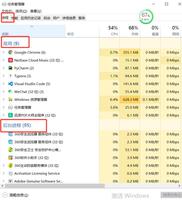非常干货:Python探针实现原理
![非常干货:Python 探针实现原理[Python基础]](/wp-content/uploads/new2022/20220602jjjkkk2/1646210357_1.jpg)
多人学习python,不知道从何学起。
很多人学习python,掌握了基本语法过后,不知道在哪里寻找案例上手。
很多已经做案例的人,却不知道如何去学习更加高深的知识。
那么针对这三类人,我给大家提供一个好的学习平台,免费领取视频教程,电子书籍,以及课程的源代码!??¤
QQ群:1057034340
One old watch, like brief python

原文:
关于 Python 的导入机制,我以前写过一篇文章,非常详细,感兴趣的可以点击这个链接进行查看: 深入探讨 Python 的 import 机制:实现远程导入模块
另外,今天再给你推荐这篇文章,同样是介绍 Python 的导入机制,和上面的文章一起食用更佳。
本文呢,将简单讲述一下 Python 探针的实现原理。同时为了验证这个原理,我们也会一起来实现一个简单的统计指定函数执行时间的探针程序。
探针的实现主要涉及以下几个知识点:
sys.meta_path
sitecustomize.py
sys.meta_path
sys.meta_path 这个简单的来说就是可以实现 import hook 的功能, 当执行 import 相关的操作时,会触发 sys.meta_path 列表中定义的对象。关于 sys.meta_path 更详细的资料请查阅 python 文档中 sys.meta_path 相关内容以及 PEP 0302 。
sys.meta_path 中的对象需要实现一个 find_module 方法, 这个 find_module 方法返回 None或一个实现了 load_module 方法的对象 (代码可以从 github 上下载 part1_) :
import sysclass MetaPathFinder:
def find_module(self, fullname, path=None):
print("find_module {}".format(fullname))
return MetaPathLoader()
class MetaPathLoader:
def load_module(self, fullname):
print("load_module {}".format(fullname))
sys.modules[fullname] = sys
return sys
sys.meta_path.insert(0, MetaPathFinder())
if __name__ == "__main__":
import http
print(http)
print(http.version_info)
load_module 方法返回一个 module 对象,这个对象就是 import 的 module 对象了。比如我上面那样就把 http 替换为 sys 这个 module 了。
$ python meta_path2.pyfind_module http
load_module http
<module "sys" (built-in)>
sys.version_info(major=3, minor=5, micro=1, releaselevel="final", serial=0)
通过 sys.meta_path 我们就可以实现 import hook 的功能:当 import 预定的 module 时,对这个 module 里的对象来个狸猫换太子, 从而实现获取函数或方法的执行时间等探测信息。
上面说到了狸猫换太子,那么怎么对一个对象进行狸猫换太子的操作呢?对于函数对象,我们可以使用装饰器的方式来替换函数对象(代码可以从 github 上下载 part2) :
import functoolsimport time
def func_wrapper(func):
@functools.wraps(func)
def wrapper(*args, **kwargs):
print("start func")
start = time.time()
result = func(*args, **kwargs)
end = time.time()
print("spent {}s".format(end - start))
return result
return wrapper
def sleep(n):
time.sleep(n)
return n
if __name__ == "__main__":
func = func_wrapper(sleep)
print(func(3))
执行结果:
$ python func_wrapper.pystart func
spent 3.004966974258423s
3
下面我们来实现一个计算指定模块的指定函数的执行时间的功能(代码可以从 github 上下载 part3) 。
假设我们的模块文件是 hello.py:
import timedef sleep(n):
time.sleep(n)
return n
我们的 import hook 是 hook.py:
import functoolsimport importlib
import sys
import time
_hook_modules = {"hello"}
class MetaPathFinder:
def find_module(self, fullname, path=None):
print("find_module {}".format(fullname))
if fullname in _hook_modules:
return MetaPathLoader()
class MetaPathLoader:
def load_module(self, fullname):
print("load_module {}".format(fullname))
# ``sys.modules`` 中保存的是已经导入过的 module
if fullname in sys.modules:
return sys.modules[fullname]
# 先从 sys.meta_path 中删除自定义的 finder
# 防止下面执行 import_module 的时候再次触发此 finder
# 从而出现递归调用的问题
finder = sys.meta_path.pop(0)
# 导入 module
module = importlib.import_module(fullname)
module_hook(fullname, module)
sys.meta_path.insert(0, finder)
return module
sys.meta_path.insert(0, MetaPathFinder())
def module_hook(fullname, module):
if fullname == "hello":
module.sleep = func_wrapper(module.sleep)
def func_wrapper(func):
@functools.wraps(func)
def wrapper(*args, **kwargs):
print("start func")
start = time.time()
result = func(*args, **kwargs)
end = time.time()
print("spent {}s".format(end - start))
return result
return wrapper
测试代码:
>>> import hook>>> import hello
find_module hello
load_module hello
>>>
>>> hello.sleep(3)
start func
spent 3.0029919147491455s
3
>>>
其实上面的代码已经实现了探针的基本功能。不过有一个问题就是上面的代码需要显示的 执行 import hook 操作才会注册上我们定义的 hook。
那么有没有办法在启动 python 解释器的时候自动执行 import hook 的操作呢?答案就是可以通过定义 sitecustomize.py 的方式来实现这个功能。
sitecustomize.py
简单的说就是,python 解释器初始化的时候会自动 import PYTHONPATH 下存在的 sitecustomize 和 usercustomize 模块:
实验项目的目录结构如下(代码可以从 github 上下载 part4) :
$ tree.
├── sitecustomize.py
└── usercustomize.py
sitecustomize.py:
$ cat sitecustomize.pyprint("this is sitecustomize")
usercustomize.py:
$ cat usercustomize.pyprint("this is usercustomize")
把当前目录加到 PYTHONPATH 中,然后看看效果:
$ export PYTHONPATH=.$ python
this is sitecustomize <----
this is usercustomize <----
Python 3.5.1 (default, Dec 24 2015, 17:20:27)
[GCC 4.2.1 Compatible Apple LLVM 7.0.2 (clang-700.1.81)] on darwin
Type "help", "copyright", "credits" or "license" for more information.
>>>
可以看到确实自动导入了。所以我们可以把之前的探测程序改为支持自动执行 import hook (代码可以从 github 上下载 part5) 。
目录结构:
$ tree.
├── hello.py
├── hook.py
├── sitecustomize.py
sitecustomize.py:
$ cat sitecustomize.pyimport hook
结果:
$ export PYTHONPATH=.$ python
find_module usercustomize
Python 3.5.1 (default, Dec 24 2015, 17:20:27)
[GCC 4.2.1 Compatible Apple LLVM 7.0.2 (clang-700.1.81)] on darwin
Type "help", "copyright", "credits" or "license" for more information.
find_module readline
find_module atexit
find_module rlcompleter
>>>
>>> import hello
find_module hello
load_module hello
>>>
>>> hello.sleep(3)
start func
spent 3.005002021789551s
3
不过上面的探测程序其实还有一个问题,那就是需要手动修改 PYTHONPATH 。用过探针程序的朋友应该会记得, 使用 newrelic 之类的探针只需要执行一条命令就 可以了: newrelic-admin run-program python hello.py 实际上修改 PYTHONPATH 的操作是在 newrelic-admin 这个程序里完成的。
下面我们也要来实现一个类似的命令行程序,就叫 agent.py 吧。
agent
还是在上一个程序的基础上修改。先调整一个目录结构,把 hook 操作放到一个单独的目录下, 方便设置 PYTHONPATH 后不会有其他的干扰(代码可以从 github 上下载 part6 )。
$ mkdir bootstrap$ mv hook.py bootstrap/_hook.py
$ touch bootstrap/__init__.py
$ touch agent.py
$ tree
.
├── bootstrap
│ ├── __init__.py
│ ├── _hook.py
│ └── sitecustomize.py
├── hello.py
├── test.py
├── agent.py
bootstrap/sitecustomize.py 的内容修改为:
$ cat bootstrap/sitecustomize.pyimport _hook
agent.py 的内容如下:
import osimport sys
current_dir = os.path.dirname(os.path.realpath(__file__))
boot_dir = os.path.join(current_dir, "bootstrap")
def main():
args = sys.argv[1:]
os.environ["PYTHONPATH"] = boot_dir
# 执行后面的 python 程序命令
# sys.executable 是 python 解释器程序的绝对路径 ``which python``
# >>> sys.executable
# "/usr/local/var/pyenv/versions/3.5.1/bin/python3.5"
os.execl(sys.executable, sys.executable, *args)
if __name__ == "__main__":
main()
test.py 的内容为:
$ cat test.pyimport sys
import hello
print(sys.argv)
print(hello.sleep(3))
使用方法:
$ python agent.py test.py arg1 arg2find_module usercustomize
find_module hello
load_module hello
["test.py", "arg1", "arg2"]
start func
spent 3.005035161972046s
3
至此,我们就实现了一个简单的 python 探针程序。当然,跟实际使用的探针程序相比肯定是有 很大的差距的,这篇文章主要是讲解一下探针背后的实现原理。
以上是 非常干货:Python探针实现原理 的全部内容, 来源链接: utcz.com/z/537910.html







